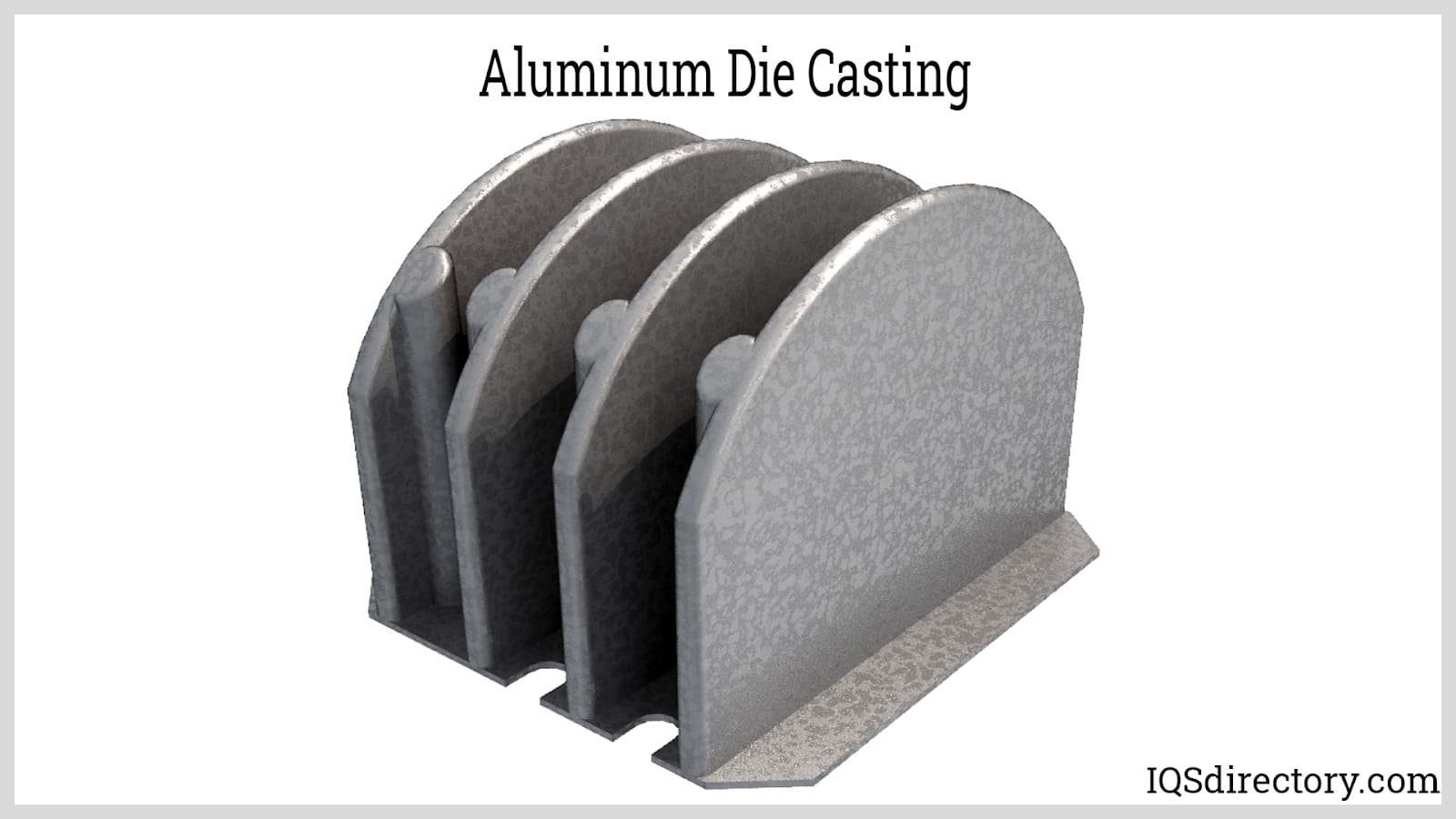How Aluminum Foundry Adds To Advancements in Aerospace Design
Aluminum shops are integral to developments in aerospace engineering. They produce light-weight, high-strength parts that are important for modern-day aircraft. Via advanced spreading techniques, these shops develop complex geometries that enhance structural stability. Furthermore, the advancement of superior Aluminum alloys supports the industry's concentrate on fuel effectiveness and sustainability. However, difficulties remain in the manufacturing procedure. Understanding these aspects exposes the profound impact of Aluminum on aeronautics's future.
The Significance of Lightweight Products in Aerospace Style
As the aerospace market remains to evolve, the relevance of light-weight materials comes to be increasingly apparent. The need for efficiency and sustainability drives engineers to prioritize using products that minimize total weight without compromising structural honesty. Lightweight materials, especially Aluminum, play an essential role in improving gas performance, improving payload capacity, and enhancing the general efficiency of airplane.
Additionally, the combination of these products enables for cutting-edge layouts, enabling manufacturers to create more aerodynamic shapes that can endure extreme conditions. The decrease in weight not just reduces functional costs but likewise adds to a lowered ecological impact, lining up with global initiatives towards sustainability in aeronautics.
Advanced Casting Techniques in Aluminum Foundries
Advanced spreading techniques in Aluminum shops play an essential duty in aerospace design by making it possible for the manufacturing of light-weight and accurate elements. Innovations in mold and mildew layout and precision casting procedures are important in achieving perfect efficiency and architectural stability. Furthermore, the growth of light-weight alloys enhances the total effectiveness and efficiency of aerospace applications.
Innovative Mold Style
Innovative mold and mildew design plays an important duty in the effectiveness and effectiveness of Aluminum factories, specifically within the aerospace market. By leveraging sophisticated materials and strategies, modern-day molds can be crafted to hold up against high temperatures and pressures, making certain peak performance throughout the casting procedure. These designs often include complicated geometries that permit the production of lightweight yet structurally audio components, vital for aerospace applications. In addition, making use of computer-aided layout (CAD) software application promotes accurate modeling, enabling foundries to refine and replicate mold and mildew designs before physical manufacturing begins. This not only improves the quality of actors components but also reduces waste and lead times, leading to considerable cost financial savings. Generally, ingenious mold and mildew design is a keystone of progression in Aluminum Foundry technology for aerospace engineering.
Precision Casting Procedures
The performance of innovative mold and mildew designs perfectly incorporates with precision spreading processes, which are crucial for creating top notch Aluminum parts in aerospace design. These procedures, consisting of sand spreading, die casting, and investment casting, guarantee the production of complex geometries with limited resistances. Advanced methods like vacuum casting and pressure die casting boost the integrity and surface area coating of the end products. Accuracy casting lessens material waste while taking full advantage of the mechanical homes of Aluminum, crucial for aerospace applications. On top of that, employing real-time monitoring and advanced simulation devices throughout the spreading procedure enables instant modifications, resulting in enhanced high quality control. Collectively, these accuracy spreading procedures position Aluminum factories at the leading edge of aerospace technology, sustaining the market's demand for reliability and efficiency.
Lightweight Alloy Development
As aerospace designers seek to enhance gas effectiveness and performance, light-weight alloy advancement becomes a necessary focus in Aluminum shops. These factories employ sophisticated casting strategies to produce alloys that offer superior strength-to-weight proportions. Developments in alloy make-up, including the unification of aspects like lithium and magnesium, enable the production of products that withstand severe conditions while lowering overall airplane weight. Strategies such as die casting and financial investment casting facilitate the precision production of intricate shapes, which are critical for aerospace applications. Furthermore, recurring research intends to maximize these alloys for improved mechanical residential or commercial properties and boosted resilience. By focusing on light-weight alloy development, Aluminum foundries substantially add to the advancement of aerospace engineering, leading the way for extra sustainable and efficient airplane layouts.

Enhancing Structural Stability Via Aluminum Elements
Aluminum components provide significant advantages in enhancing architectural stability within aerospace engineering. Their lightweight nature adds to overall efficiency while maintaining strength, which is crucial for airplane efficiency. Furthermore, the anxiety resistance homes of Aluminum assistance guarantee the resilience and reliability of aerospace frameworks under numerous operational problems.
Light-weight Material Benefits
While typical products commonly jeopardize weight for strength, using Aluminum elements in aerospace design supplies considerable benefits in structural integrity. Aluminum's light-weight nature adds to total style effectiveness, enabling even more streamlined airplane that take in less gas, thus improving sustainability. The material's superb strength-to-weight proportion assurances that components maintain longevity without adding unnecessary mass. This high quality fosters boosted performance and dexterity in flight, along with optimized haul capabilities. Additionally, Aluminum's resistance to corrosion lengthens the lifespan of aerospace frameworks, lowering maintenance expenses and boosting safety and security. As producers significantly adopt Aluminum alloys, the aerospace industry experiences a transformative shift towards extra reliable and efficient engineering remedies that prioritize both performance and environmental duty.
Stress And Anxiety Resistance Properties
Although different products have distinct homes, Aluminum's remarkable anxiety resistance stands out as a critical element in improving the architectural integrity of aerospace elements. This resistance plays a vital duty in guaranteeing that airplane can hold up against different functional tensions, consisting of tiredness, influence, and environmental conditions. Aluminum alloys, specifically engineered for aerospace applications, exhibit high tensile strength while maintaining lightweight attributes, making it possible for designers to make extra efficient structures - Aluminum Foundry. Furthermore, the capacity of Aluminum to withstand cyclic loading without considerable read this article deformation adds to the durability and reliability of aerospace parts. As innovations proceed in Aluminum Foundry methods, the development of stress-resistant Aluminum parts assures additional enhancements in performance, safety and security, and performance throughout the aerospace sector, strengthening Aluminum's function as a preferred product in contemporary design
Fuel Efficiency Improvements Driven by Aluminum Innovations
As the aerospace sector looks for to enhance fuel efficiency, cutting-edge uses Aluminum have actually become a crucial service. Aluminum's lightweight nature especially minimizes aircraft weight, permitting lower gas usage during trip. This reduction in weight is vital, as even little decreases can cause substantial renovations in general fuel economic situation.
Advanced Aluminum alloys, made for improved strength and resilience, make it possible for producers to develop components that keep structural honesty while minimizing mass - Aluminum Foundry. Additionally, the integration of Aluminum in airframes and engine parts promotes boosted the rules of aerodynamics, adding to lowered drag and boosted performance
The fostering of Aluminum in aerospace not only fulfills the demand for fuel-efficient style but also aligns with regulative pressures for lower emissions. As these technologies proceed to advance, they play a significant function in establishing brand-new benchmarks for fuel efficiency, making certain that the aerospace field can satisfy expanding environmental and economic difficulties.

The Function of Aluminum in Sustainable Aeronautics Practices
The raising focus on sustainable air travel methods has actually placed Aluminum as a crucial material in the quest for greener airplane design. Known for its lightweight residential properties, Aluminum substantially lowers airplane weight, resulting in reduced fuel consumption and emissions. Its recyclability even more improves its sustainability profile, as Aluminum can be recycled indefinitely without loss of top quality. This particular sustains a round economy within the aeronautics sector, reducing waste and resource deficiency.
Furthermore, improvements in Aluminum alloys have improved their toughness and deterioration resistance, enabling for longer service life and lowered upkeep needs. These advancements assist in the advancement of much her latest blog more efficient airplane frameworks, adding to total sustainability efforts. Additionally, Aluminum's thermal conductivity plays a critical duty in energy-efficient layouts, enhancing systems such as warm exchangers. Jointly, these characteristics emphasize Aluminum's critical duty ahead of time lasting aeronautics, aligning with international initiatives targeted at lowering the environmental effect of flight.
Difficulties Encountered by Aluminum Foundries in Aerospace Manufacturing
While Aluminum factories play an important duty in aerospace manufacturing, they face substantial challenges that can affect manufacturing effectiveness and quality. One significant difficulty is the rigid top quality control standards called for in the aerospace industry. Any defect can endanger safety and security and performance, necessitating extensive inspection processes that expand manufacturing timelines. Additionally, factories usually compete with changing raw product prices, which can influence rates and profitability. The complexity of Aluminum alloys made use of in aerospace applications further complicates the manufacturing process, as exact solutions are important for achieving preferred mechanical properties. Additionally, knowledgeable labor scarcities prevent the capacity to keep high-grade manufacturing levels. Finally, ecological laws enforce constraints on exhausts and waste management, requiring foundries to purchase sustainable methods, which can be cost-prohibitive. These aspects collectively develop a landscape where Aluminum factories must continually adapt to meet the developing needs of aerospace production while guaranteeing safety and security and compliance.
Future Trends in Aluminum Applications for Aerospace Design
With innovations in innovation and enhancing demands for performance, the future of Aluminum applications in aerospace engineering is positioned for considerable makeover. The assimilation of cutting-edge Aluminum alloys and composites is anticipated to improve strength-to-weight proportions, bring about more fuel-efficient aircraft styles. Additionally, innovations in additive manufacturing strategies will certainly allow for the manufacturing of intricate Aluminum frameworks that were formerly impossible, optimizing efficiency and reducing waste.

Lasting techniques will certainly play an important duty, with an expanding focus on recycling Aluminum to minimize environmental effect. The aerospace market is most likely to accept smarter manufacturing processes, such as automation and expert system, making sure greater top quality and precision in Aluminum elements. Additionally, partnerships in between Aluminum factories and aerospace business will certainly cultivate r & d, leading the means for new applications that satisfy the strict demands of contemporary aerospace engineering - Aluminum Foundry. On the whole, the future looks promising for Aluminum's role in shaping the skies
Often Asked Questions
What Are the Ecological Influences of Aluminum Manufacturing in Aerospace?
The ecological influences of Aluminum production in aerospace consist of considerable power intake, greenhouse gas discharges, and environment disruption. Additionally, mining procedures can cause soil deterioration and water contamination, elevating concerns about sustainability and ecological equilibrium.
Exactly How Does Aluminum Contrast to Various Other Materials in Aerospace Applications?
Aluminum provides a distinct mix of light-weight residential properties, corrosion resistance, and cost-effectiveness compared to various other materials. Its high strength-to-weight ratio makes visit here it particularly useful for aerospace applications, enhancing fuel performance and total performance in airplane style.
What Qualifications Do Aluminum Foundry Employees Need for Aerospace Projects?
Aluminum Foundry workers require specialized training in metallurgy and casting methods, along with knowledge of aerospace market requirements. Certifications in quality assurance and safety methods are likewise vital to guarantee compliance with stringent aerospace task requirements.
Are There Any Safety Interest In Using Aluminum in Aerospace Engineering?
Safety concerns regarding Aluminum in aerospace engineering include sensitivity to rust, tiredness, and stress and anxiety fractures. Appropriate treatment and alloy option are vital to alleviate these risks, making certain architectural stability and overall security in aerospace applications.
Just How Does Aluminum Recycling Benefit the Aerospace Market?
Aluminum reusing substantially benefits the aerospace sector by reducing product expenses, minimizing environmental effect, and conserving energy. This lasting practice boosts the sector's performance while advertising using light-weight, high-performance components in airplane manufacturing.
Advanced spreading techniques in Aluminum shops play a critical role in aerospace design by making it possible for the manufacturing of light-weight and specific elements. Ingenious mold and mildew style plays a crucial role in the performance and performance of Aluminum shops, especially within the aerospace field. As aerospace designers seek to improve gas effectiveness and efficiency, light-weight alloy advancement becomes a vital emphasis in Aluminum shops. Aluminum alloys, specifically engineered for aerospace applications, exhibit high tensile stamina while preserving light-weight attributes, making it possible for designers to create a lot more reliable frameworks. Cooperations between Aluminum foundries and aerospace firms will promote research and development, paving the way for new applications that fulfill the rigid needs of modern-day aerospace engineering.